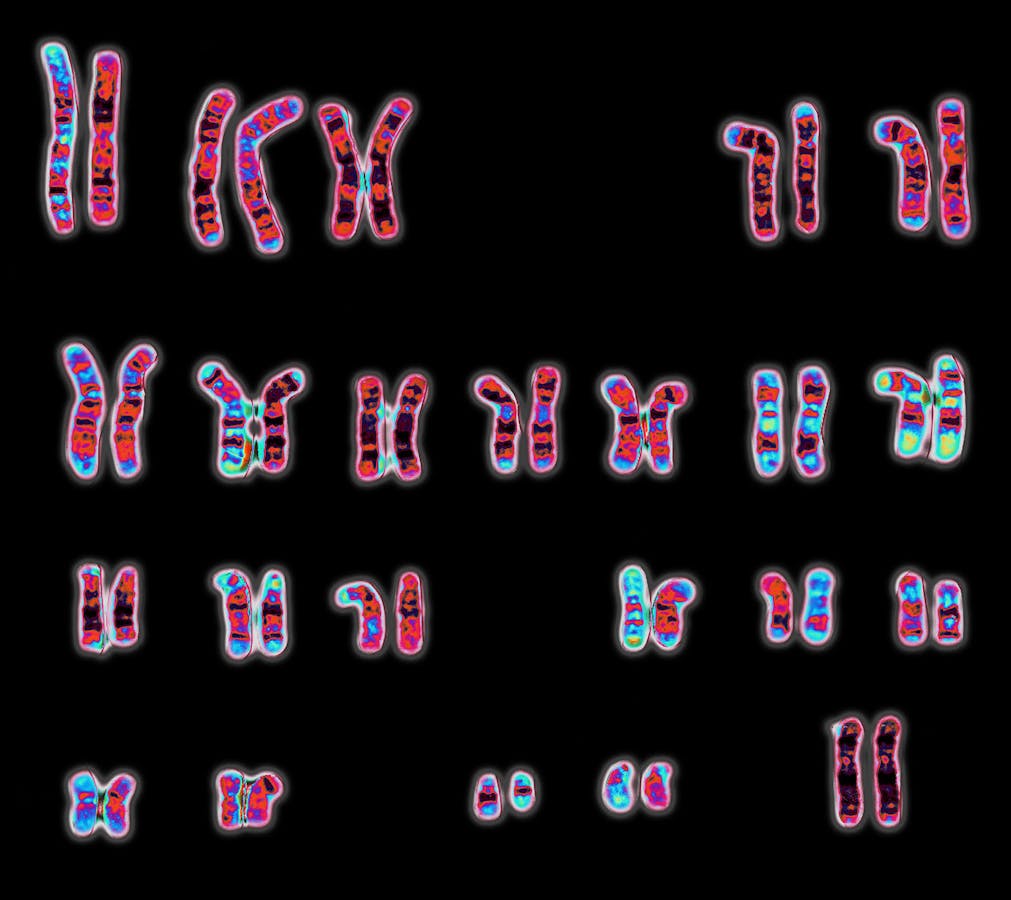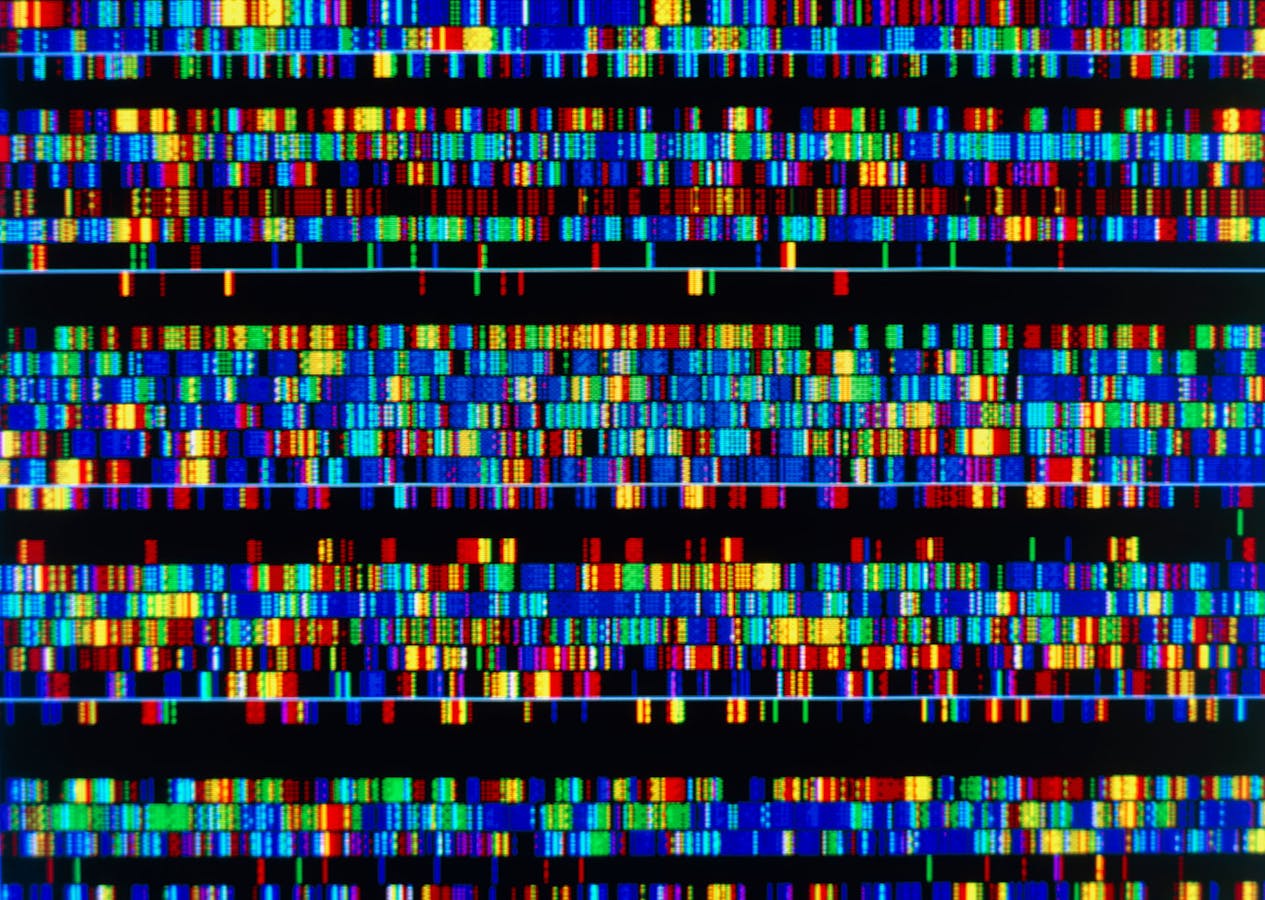How do plants and animals know how to grow? Why do biological family members look alike?
Over the past century, the field of genetics has begun to answer this ancient question. Thousands of scientists from around the world, including some whose worldviews were heavily shaped by the Bible, have worked to reveal the genetic code that allows all plants and animals to develop and operate.
The human genome contains a staggering amount of information. For some people today, the complexity of our genes reflects purposeful design.
“Human DNA is like a computer program but far, far more advanced than any software ever created.”
Bill Gates, The Road Ahead, 1995
The field of genetics is relatively young. Did you know it can trace its roots back to the work of a Catholic monk and botanist named Gregor Johann Mendel?
In the late nineteenth century, Mendel conducted experiments crossbreeding pea plants which began to roll back the mystery of biological inheritance. Eventually, scientists identified the DNA molecule as the mechanism of hereditary transmission.
Mendel died before his discoveries received recognition. Yet today, he is considered the founder of the science of genetics. His observations paved the way for our knowledge of DNA.
The Human Genome Project was a remarkable initiative that sequenced the entire human genome between 1990 and 2003. Perhaps more than any other modern scientific breakthrough, it demonstrates the power of human cooperation.
The project involved an international consortium of scientists from 20 institutions in six countries, under the leadership of Francis Collins of the National Institutes of Health. In addition, and in parallel, the biotechnology company Celera, under the leadership of Craig Venter, was a key component in the project’s success.
DNA is sometimes called the “code of life” because it carries the detailed biological instructions required for living things to develop and operate. Just how amazing is this biological blueprint? Where did it come from?
The field of genetics is relatively young. Did you know it can trace its roots back to the work of a Catholic monk and botanist named Gregor Johann Mendel?
In the late nineteenth century, Mendel conducted experiments crossbreeding pea plants which began to roll back the mystery of biological inheritance. Eventually, scientists identified the DNA molecule as the mechanism of hereditary transmission.
Mendel died before his discoveries received recognition. Yet today, he is considered the founder of the science of genetics. His observations paved the way for our knowledge of DNA.
The Human Genome Project was a remarkable initiative that sequenced the entire human genome between 1990 and 2003. Perhaps more than any other modern scientific breakthrough, it demonstrates the power of human cooperation.
The project involved an international consortium of scientists from 20 institutions in six countries, under the leadership of Francis Collins of the National Institutes of Health. In addition, and in parallel, the biotechnology company Celera, under the leadership of Craig Venter, was a key component in the project’s success.
DNA is sometimes called the “code of life” because it carries the detailed biological instructions required for living things to develop and operate. Just how amazing is this biological blueprint? Where did it come from?
The field of genetics is relatively young. Did you know it can trace its roots back to the work of a Catholic monk and botanist named Gregor Johann Mendel?
In the late nineteenth century, Mendel conducted experiments crossbreeding pea plants which began to roll back the mystery of biological inheritance. Eventually, scientists identified the DNA molecule as the mechanism of hereditary transmission.
Mendel died before his discoveries received recognition. Yet today, he is considered the founder of the science of genetics. His observations paved the way for our knowledge of DNA.
The Human Genome Project was a remarkable initiative that sequenced the entire human genome between 1990 and 2003. Perhaps more than any other modern scientific breakthrough, it demonstrates the power of human cooperation.
The project involved an international consortium of scientists from 20 institutions in six countries, under the leadership of Francis Collins of the National Institutes of Health. In addition, and in parallel, the biotechnology company Celera, under the leadership of Craig Venter, was a key component in the project’s success.
DNA is sometimes called the “code of life” because it carries the detailed biological instructions required for living things to develop and operate. Just how amazing is this biological blueprint? Where did it come from?












